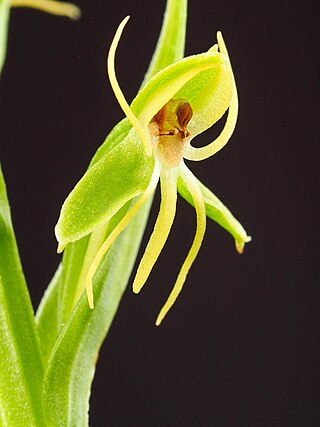
Aspidosperma cylindrocarpon is a timber tree native to Brazil, Paraguay, Bolivia, and Peru. It is common in Atlantic Forest, Cerrado and Pantanal vegetation of Brazil. This plant is cited in Flora Brasiliensis by Carl Friedrich Philipp von Martius. In addition, it is useful for beekeeping.

Aspidosperma macrocarpon is a timber tree native to Brazil, Venezuela, Bolivia, Paraguay, and Peru. It is common in Cerrado vegetation. It has a self-supporting growth form with simple, broad leaves. This plant is cited in Flora Brasiliensis by Carl Friedrich Philipp von Martius, and it is useful for beekeeping. Individual plants can grow up to 25 m.

Aspidosperma subincanum is a timber tree native to Brazil and Bolivia. It is common in Cerrado vegetation in Brazil. It was first described by Carl Friedrich Philipp von Martius in 1838.

Aspidosperma tomentosum is a timber tree native to Brazil, Bolivia, and Paraguay. It is common in of Cerrado vegetation in Brazil. It was first described by Carl Friedrich Philipp von Martius.

Aspidosperma australe is a timber tree native to Brazil, Argentina, Bolivia, and Paraguay.

Hancornia is a genus of flowering plant in the family Apocynaceae, first described as a genus in 1812. It is native to South America. It contains only one known species, Hancornia speciosa, commonly called mangabeira, which produces fruits known as mangabas.

Aechmea bromeliifolia is a bromeliad native to southern Mexico, Central America, Trinidad, and South America as far south as northern Argentina.

Billbergia pyramidalis, commonly known as the flaming torch and foolproof plant, is a species of bromeliad that is native to northern South America and parts of the Caribbean. It was first described by John Sims, and got its current name by John Lindley.

Cyrtopodium hatschbachii is a species of orchid. It is native to Brazil, Argentina and Paraguay.

Eulophia alta is a species of orchid, known as the wild coco. It is widespread across tropical and subtropical parts of Africa, South America, Central America, Mexico and the West Indies, as well as the southeastern United States.

Octomeria crassifolia is a species of orchid found from eastern Ecuador, Brazil, Paraguay, Uruguay and northern Argentina.

Aechmea coelestis is a species of flowering plant in the genus Aechmea. This is a species that is native to southeastern Brazil from Espírito Santo to Santa Catarina.

Tillandsia bulbosa, the bulbous airplant, is a species of flowering plant in the genus Tillandsia. It is widespread across Central America, the West Indies, southern Mexico, and northern and eastern South America.
Aechmea caesia is a plant species in the genus Aechmea. This species is endemic to the State of Rio de Janeiro in Brazil.

Trizeuxis is a monotypic genus of flowering plants from the orchid family, Orchidaceae. The sole species is Trizeuxis falcata, native to the American Tropics.

Maxillaria picta is a species of plant in the orchid family native to Brazil, Paraguay and Argentina.

Habenaria repens, commonly called the water-spider bog orchid or the floating orchid, is an orchid species widespread across Latin America from Mexico and the West Indies south to Argentina, as well as in the Southeastern United States from Texas and Oklahoma east to Florida and the Carolinas plus an isolated population in Virginia.

Cyclopogon elatus is a species of terrestrial orchids. It is widespread across much of Latin America from Mexico and Belize to Argentina, as well as in the West Indies and southern Florida.

Ionopsis utricularioides, the delicate violet orchid, is an epiphytic orchid native to the warmer parts of the Americas. It is reported from Florida, Mexico, Central America, much of the West Indies including the Cayman Islands, South America as far south as Paraguay, and the Galápagos.
Diploon is a genus of plant in the family Sapotaceae described as a genus in 1946.


















